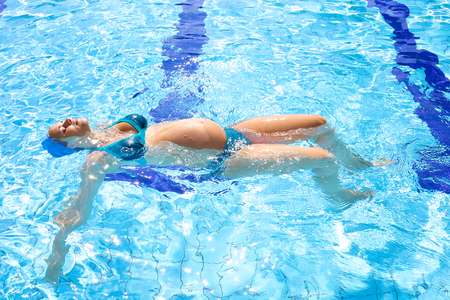Specific Sports Guidelines for Pregnancy

In this article, you will find:
Page 1
Specific Sports Guidelines for Pregnancy
The bottom line with regard to sports participation is preserving you and your baby's health. You must consider risk of falls, not only because this can affect the pregnancy, but also because x-rays, medications, and surgeries needed to evaluate and treat injuries can be harmful to the pregnancy. Repeated forceful impact can disrupt the placenta and put the pregnancy at serious risk. Environmental conditions such as high altitude and severe temperatures can interfere with the flow of oxygen and blood to supply the baby. These risks are relative to skill level and what your body is used tofor example, skiing at a high altitude is not recommended for most, but for a woman who lives at a high altitude and skis without falling, it can be done with caution due to other falling into her. General recommendations for sports are avoiding risks of falls and trauma, especially abdominal injury due to contact and impact. Falls should especially be avoided because impact can cause placental abruption, and orthopedic care of injuries such as x-rays or surgery can be risky to the fetus. Activities Not Recommended/High-Risk Sports
| Increased Potential for | Increased Risk of Abdominal |
| Falls/Trauma | Injury |
| Downhill and waterskiing | Hockey (field and ice) |
| Hang gliding, sky diving | Basketball |
| Horseback riding | Soccer |
| Skating | Boxing |
| Gymnastics | Wrestling |
| Rock climbing | Football |
| Scuba diving | Martial arts involving fighting/contact |
Environment is very important to the health of your pregnancy. Vacationing or exercising at altitudes above 8,500 feet is not recommended due to lower oxygen content (unless you already live there, in which case your blood has adapted to this). If you are planning a ski or hiking trip, stick to the lower-altitude resorts. You can also be more prone to altitude sickness than when you are not pregnant, so beware of symptoms of light-headedness, headache, nausea, insomnia, poor appetite, or fatigue, and drink even more fluids than usual. As with any change in climate, take a few days to let your body adjust to the new altitude before beginning physical activity in the new environment. Temperature, as previously discussed, is a major consideration. Avoid exercising in temperatures above 80 degrees Fahrenheit.
Specific Sport Guidelines for Exercising During Pregnancy
Most sports can be continued with modifications. If you have any questions check with your doctor before participating. For all standing and weight-bearing exercises, make sure your shoes fit comfortably and are not too tight; it is common for feet to become swollen, so purchase shoes to accommodate. Also, make sure you have good cushioning to accommodate your added weight. Your exercise shoes should be replaced at least every three months. The following are generally recommended activity modifications:
- AerobicsAvoid crowded, overheated rooms, and avoid advanced step or kickboxing classes to prevent falls or injury. After the second trimester, avoid bouncing movements and more than five minutes of lying on your back; do not do exercises lying on your stomach. Be careful that stretching is not done quickly or forcefully. Low-impact and water aerobics are less likely to cause injuries.
- CyclingChanges in body weight, posture, and center of gravity can affect balance. A stationary bicycle is usually a safer choice. Elite-level cyclists might want to change from a racing bike to a mountain bike for more shock absorption and an upright position for increased comfort and visibility.
- Racket sportsAs pregnancy progresses, decrease the aggressiveness of play to avoid falls and ankle sprains due to changes in center of gravity and coordination.
- Running / joggingIt is not recommended that you begin a running program during pregnancy, but if you have been running prior to your pregnancy, jogging can continue at shorter distances as long as you are physically comfortable, drink plenty of fluids, and stay cool.
- Skiing/snowboardingDownhill activities should only be done if you are very experienced and do not fall. Cross-country skiing is much safer due to its much lower risk of falls. Special attention must be paid to fluid intake, as the cold weather makes you feel that you are not sweating, but you are. Follow the same fluid recommendations for any aerobic activity. Unless you already live at high altitude, you should not go above 3,000 feet. Most doctors prohibit skiing and snowboarding at all stages of pregnancy.
- SwimmingSwimming is one of the favorite pregnancy exercises, especially in the third trimester, when floating takes pressure off your spine and joints. Do not dive or jump in the water, and extremes of water temperature need to be avoided. Swimming is not advisable if there is any vaginal fluid leak.
- Weight trainingThe goal of weight training in pregnancy is to maintain, not gain, strength. Routines should be modified with lighter weights and fewer repetitions with no straining. Proper breathing technique is important to avoid breath holding, which increases blood pressure, decreasing blood flow to the baby. Positions should be modified to avoid lying flat on your back in the third trimester. Avoid lifting weights so heavy that you would normally require a spotter.